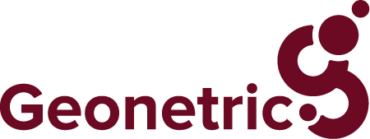Healthcare marketing teams often face the dual challenges of limited budgets and growing expectations of results from leadership. And when those limitations lead to your digital experience no longer aligning with your organization’s growth or strategic objectives, it’s easy to feel stuck.
However, success is possible — even without a full website redesign — through user experience (UX) improvements and iterative design. By embracing small yet meaningful changes, you can demonstrate impact, justify investments, and make progress toward your healthcare marketing goals.
Let’s take a look at some of the common pain points felt by healthcare marketers who are “stuck” with a limited budget and resources, and the ways UX and iterative design can help break through those barriers.
Tackle incremental changes, no redesign required
A complete website redesign can feel like the only solution when your digital presence no longer serves your organization’s needs. However, with limited resources, this may not be feasible. The good news? Iterative design and UX offer an alternative path forward.
Start by identifying the most critical pain points in your user experience. Are patients struggling to find provider information? Is it easy to schedule an appointment from your homepage, or do visitors need to navigate several pages before they can request a visit?
These high-impact areas can serve as starting points for targeted updates that immediately improve usability. For example, optimizing your site’s navigation or enhancing calls-to-action (CTAs) can significantly improve patient satisfaction and engagement.
Small changes like these often require fewer resources but can yield measurable results. Consider prioritizing changes based on user feedback, analytics insights, or competitor research to ensure your efforts align with patient expectations and organizational healthcare marketing goals.
Showcase how small changes can make an impact
It’s a common misconception (especially among healthcare leaders who aren’t involved in day-to-day marketing activities) that only sweeping changes deliver meaningful outcomes. Leadership teams may undervalue iterative design, assuming incremental updates won’t justify the effort. But data proves otherwise.
For instance, A/B testing minor adjustments like button colors, copy, or form layouts can reveal user preferences and increase conversions. A seemingly simple improvement — such as reducing the number of required fields in a form — can lead to higher conversion rates. These incremental gains add up over time, creating a more effective and user-friendly digital experience.
To demonstrate the value of small changes, document your results. Show leadership how a streamlined navigation menu increased page visits or how an updated CTA drove more appointment requests. By tying healthcare marketing improvements to metrics like engagement or revenue, you can build a case for continued investment in iterative design.
Rethink how you prove healthcare marketing ROI
Convincing leadership to support healthcare marketing initiatives can be challenging, especially when budgets at your organization are tight. To make your case, focus on the measurable return on investment of iterative improvements.
Begin by framing your updates as opportunities to enhance patient experience. Use data to tell a compelling story: highlight the specific problem, outline your proposed solution, and share potential outcomes based on industry benchmarks or past successes. For example, explain how reorganizing your site’s main navigation could reduce bounce rates and increase appointment bookings.
It’s also a smart move to emphasize the cost-effectiveness of iterative design. Small, targeted changes don’t require the same investment as a full redesign, yet they can deliver significant results. Presenting leadership with a clear, data-backed roadmap for achieving organizational goals will strengthen their confidence in your marketing team.
Getting unstuck doesn’t require unlimited resources or a massive overhaul. By embracing iterative design, focusing on user experience, and advocating for strategic changes, you can achieve meaningful healthcare marketing progress — even on a tight budget.
The key is to start small, prioritize high-impact updates, and measure your results. When leadership sees the value of these efforts, you’ll not only earn their support but also position your marketing team as a driver of organizational growth and success.
Looking for a partner who can suggest and implement iterative updates that can make a real difference for your organization? Geonetric is ready to help with more than 25 years of healthcare marketing experience and a proven track record of helping hospitals and health systems of all sizes and budgets achieve their marketing goals. Contact us today to get started!

